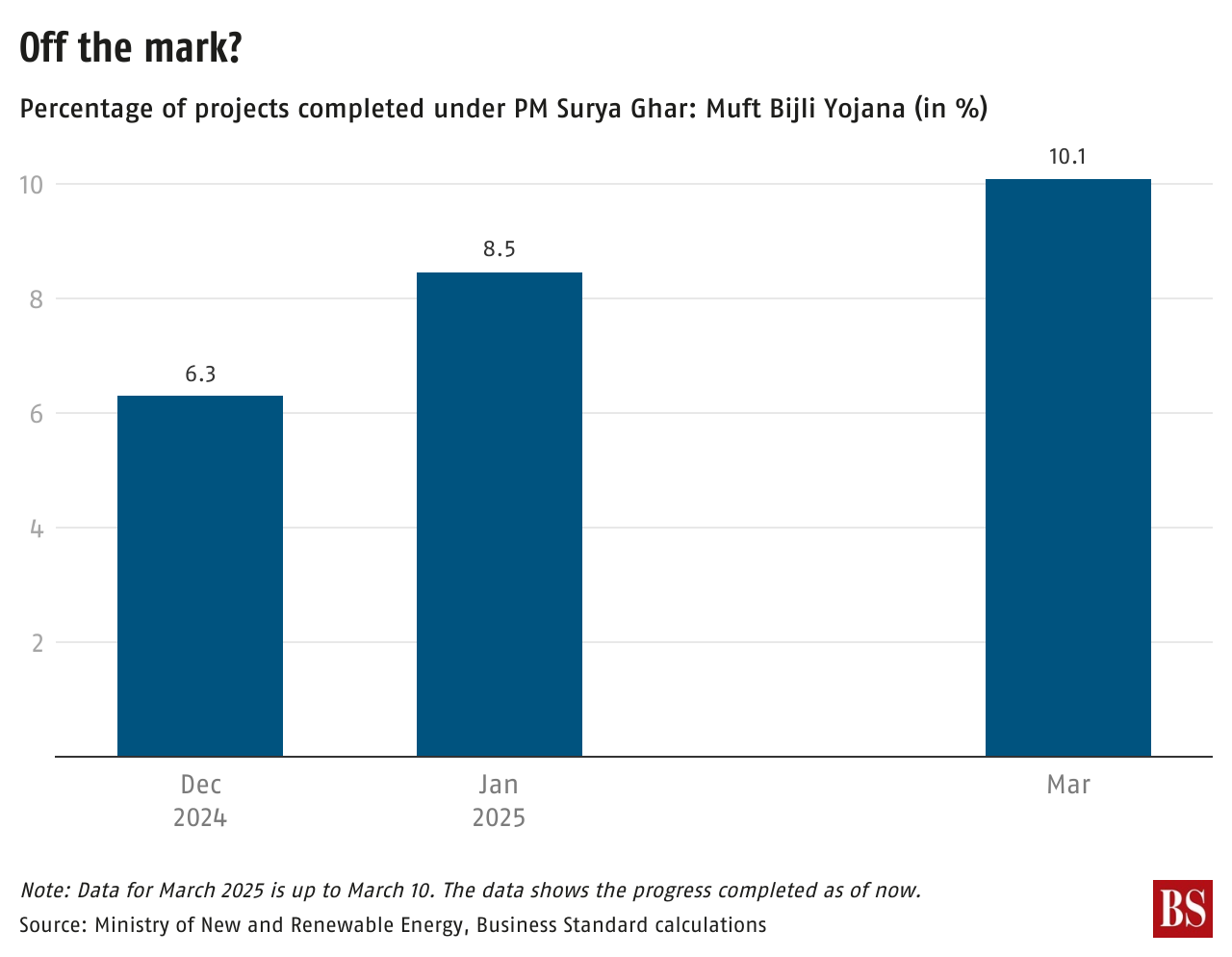Rooftop solar power scheme has a mountain to climb
Programme for India’s renewable energy transition is making slow progress
On February 13, a government programme for India’s renewable energy transition completed its first year. The PM Surya Ghar Muft Bijli Yojana (PMSGMBY) provides free electricity to households by installing subsidised rooftop solar panels.
It is to supply solar power to 10 million households by January 2027, but only 8.46 per cent per cent of the target has been achieved as of January 2025, according to data provided by the government. The data showed that the average installation rate is 70,000 per month. At this pace, PMSGMBY must accelerate its progress to meet its target. If the current rate continues, only 268,000 installations — just 26.89 per cent of the target —will be completed by January 2027. Later, new and renewable energy minister Pralhad Joshi tweeted the programme has “empowered” one million homes with solar energy as of March 10 (chart 1, click image for interactive link).
PMSGMBY’s reach is uneven. Gujarat and Maharashtra account for nearly two-thirds (64.26 per cent) of total installations. Gujarat has a 41.47 per cent share and Maharashtra 22.79 per cent. The three states next comprise just 19.56 per cent of total installations: Uttar Pradesh (8.69 per cent), Kerala (7.73 per cent), and Rajasthan (3.14 per cent). All other states account for only about one-sixth of total installations (chart 2).
Funding for the scheme is not a constraint: Budget estimates for 2024-25 were revised from Rs 6,250 crore to Rs 11,100 crore and Rs 20,000 crore was allocated for 2025-26 (chart 3).
The government has laid out projected growth, aiming for four million installations by March 2026 and ten million by January 2027. Given the current pace, a substantial acceleration will be required. The increased financial allocation, policy push, and a growing awareness of solar benefits may help in bridging this gap.
PMSGMBY offers households up to 60 per cent subsidy for 2 kW systems and 40 per cent for up to 3 kW, reducing costs for consumers. Households benefit from lower electricity bills and they can sell excess power back to the grid. The government has simplified the application process through a dedicated online portal and streamlined bank financing. Making people aware of the benefits of solar power may help the programme to gain speed.





